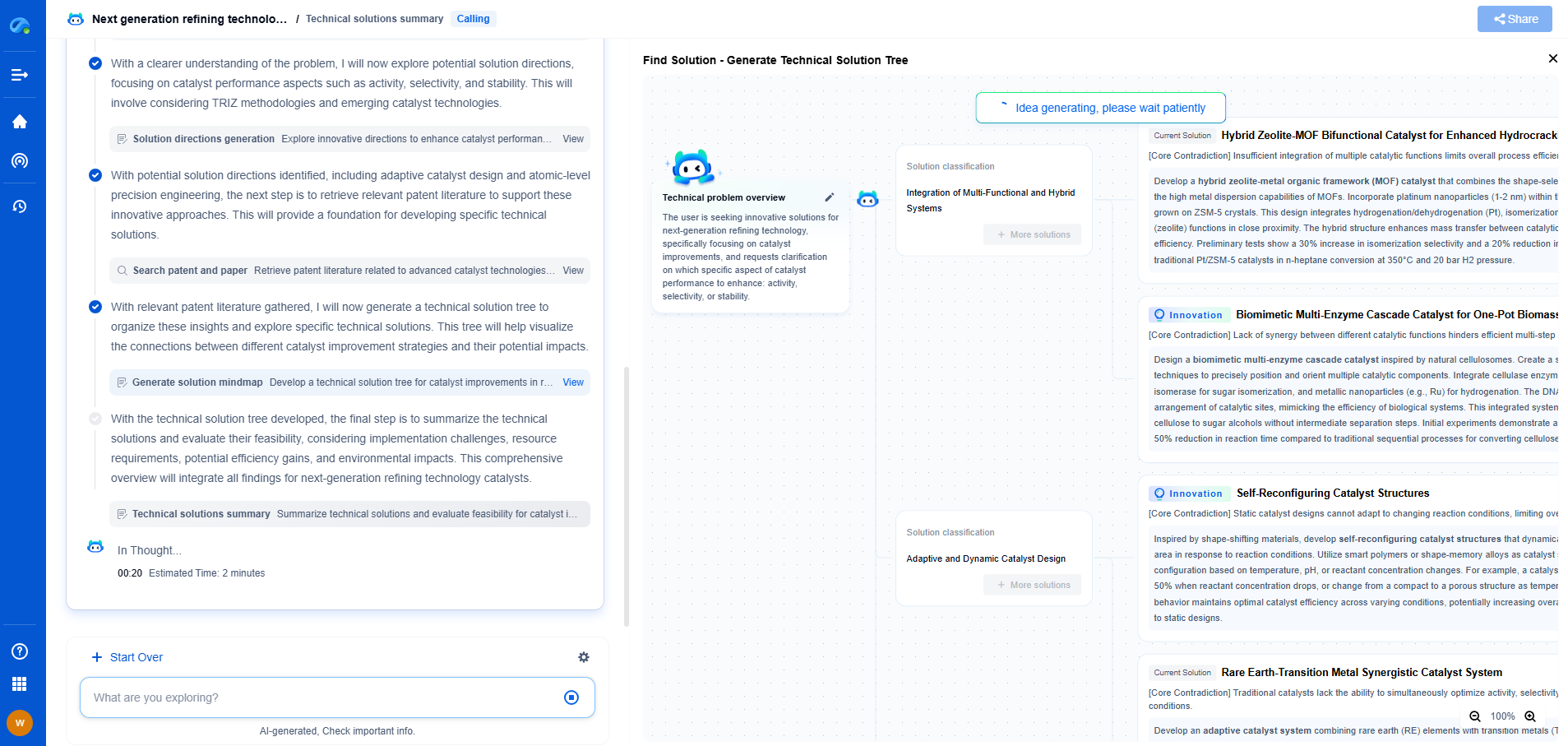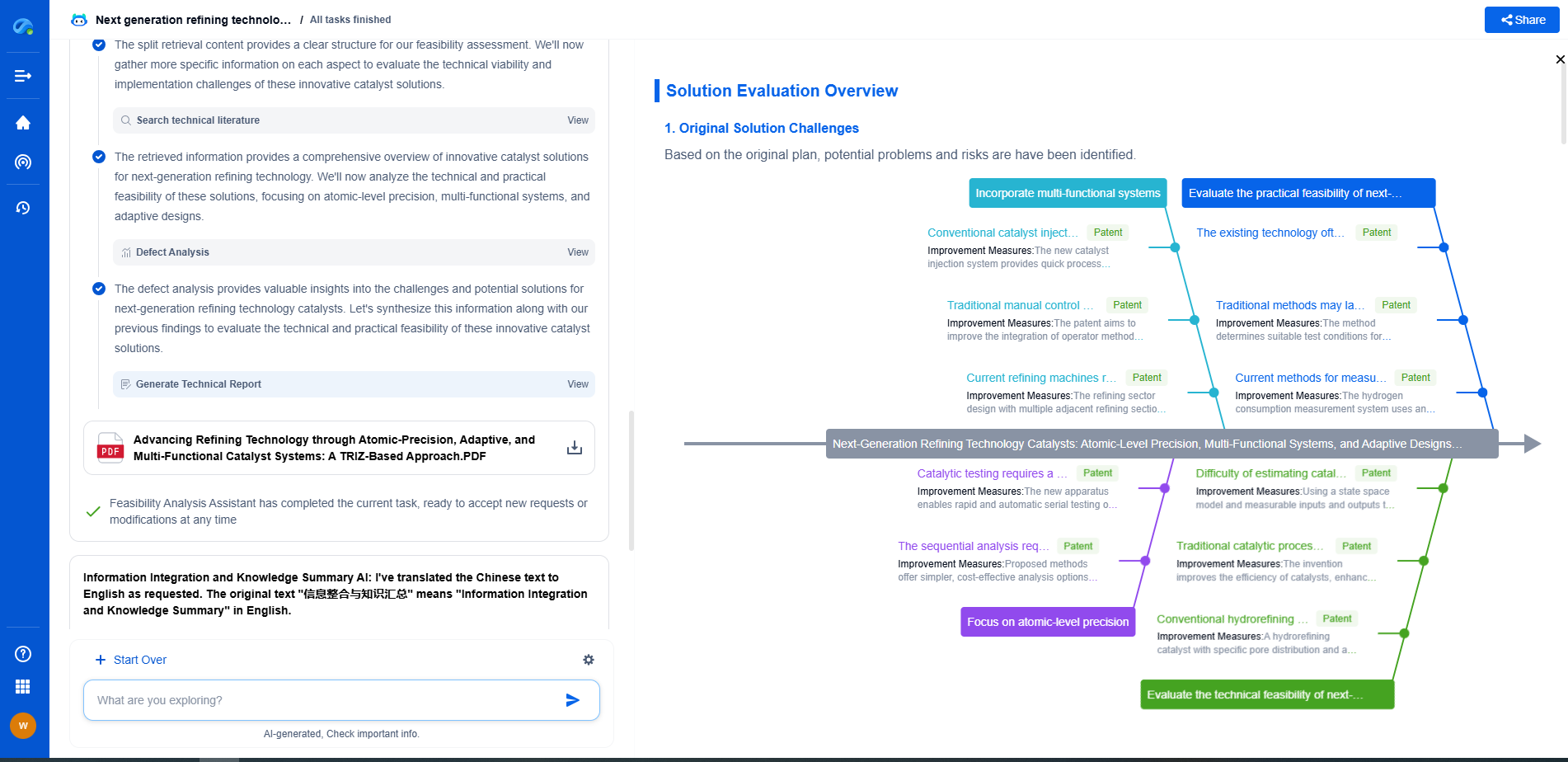Pharmaceutical QC: Validating UV-Vis Spectrometers per USP <857>
JUL 15, 2025 |
Understanding USP <857>
USP <857> sets forth the criteria for the qualification and verification of UV-Vis spectrometers. This includes performance characteristics such as wavelength accuracy, photometric accuracy, resolution, stray light, and baseline stability. Adhering to these guidelines ensures that the spectrometer provides reliable and consistent data, which is vital for making informed decisions in pharmaceutical QC.
Performance Characteristics of UV-Vis Spectrometers
1. Wavelength Accuracy
Wavelength accuracy is crucial for identifying and quantifying compounds. USP <857> specifies that the wavelength calibration should be verified using certified standards, such as holmium oxide filters, which have well-defined absorption peaks. Regular verification helps prevent errors in the identification of compounds due to incorrect wavelength readings.
2. Photometric Accuracy
Photometric accuracy ensures that the absorbance readings are precise, which is essential for determining the concentration of analytes in a sample. According to USP <857>, photometric accuracy can be verified using standardized absorbance filters or solutions with known absorbance values. Frequent validation of photometric accuracy minimizes the risk of quantification errors.
3. Resolution
Resolution refers to the ability of the spectrometer to distinguish between two closely spaced absorption bands. USP <857> recommends verifying resolution using a material such as toluene in hexane, which exhibits well-defined absorption peaks. Ensuring adequate resolution is critical for accurate compound differentiation.
4. Stray Light
Stray light can significantly impact the accuracy of absorbance measurements, especially at low concentrations. USP <857> suggests using a cutoff filter to assess the amount of stray light present in the system. By minimizing stray light, the integrity of the absorbance data is maintained, leading to more reliable results.
5. Baseline Stability
Baseline stability is the ability of the spectrometer to maintain a consistent baseline over time. Any drift or variation can lead to inaccurate absorbance readings. USP <857> emphasizes the importance of regular checks and maintenance of the instrument to ensure stable baseline performance.
Implementing a Validation Protocol
To effectively validate a UV-Vis spectrometer, laboratories should develop a comprehensive validation protocol that aligns with the requirements of USP <857>. This protocol should outline the procedures for testing each performance characteristic, the frequency of validation, and the acceptance criteria. By documenting these processes, laboratories can ensure consistency and traceability in their validation efforts.
The Role of Regular Maintenance
In addition to following USP <857> guidelines, regular maintenance of the spectrometer is vital for its optimal performance. This includes cleaning optical components, calibrating the instrument, and checking for software updates. Routine maintenance not only extends the lifespan of the spectrometer but also enhances its reliability, thereby reducing the likelihood of incorrect data affecting product quality decisions.
Challenges and Considerations
While USP <857> provides a robust framework for validating UV-Vis spectrometers, laboratories may encounter challenges such as resource constraints, variations in equipment, and operator expertise. It is essential for laboratories to address these challenges by investing in appropriate training, resources, and technologies to streamline the validation process.
Conclusion
Validating UV-Vis spectrometers according to USP <857> is a critical aspect of pharmaceutical QC that ensures the reliability and accuracy of analytical results. By adhering to these standards and implementing a robust validation protocol, laboratories can enhance their confidence in the data generated, ultimately supporting the production of safe and effective pharmaceutical products. As the industry continues to advance, maintaining rigorous validation practices will remain an essential component of quality control efforts.
From interferometers and spectroradiometers to laser displacement sensors and fiber optic probes, the field of optical measurement is evolving at light speed—driven by innovations in photonics, MEMS integration, and AI-enhanced signal processing.
With Patsnap Eureka, biomedical innovators can navigate cross-domain insights in optics, electronics, and biocompatible materials, while discovering IP trends across academic, clinical, and commercial datasets.
💡 Fuel your next breakthrough in optical health tech—start using Patsnap Eureka to unlock deep insights today.
- R&D
- Intellectual Property
- Life Sciences
- Materials
- Tech Scout
- Unparalleled Data Quality
- Higher Quality Content
- 60% Fewer Hallucinations
Browse by: Latest US Patents, China's latest patents, Technical Efficacy Thesaurus, Application Domain, Technology Topic, Popular Technical Reports.
© 2025 PatSnap. All rights reserved.Legal|Privacy policy|Modern Slavery Act Transparency Statement|Sitemap|About US| Contact US: help@patsnap.com

